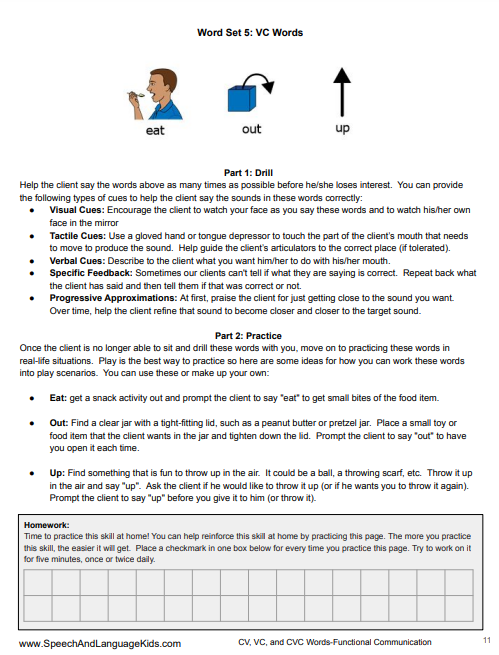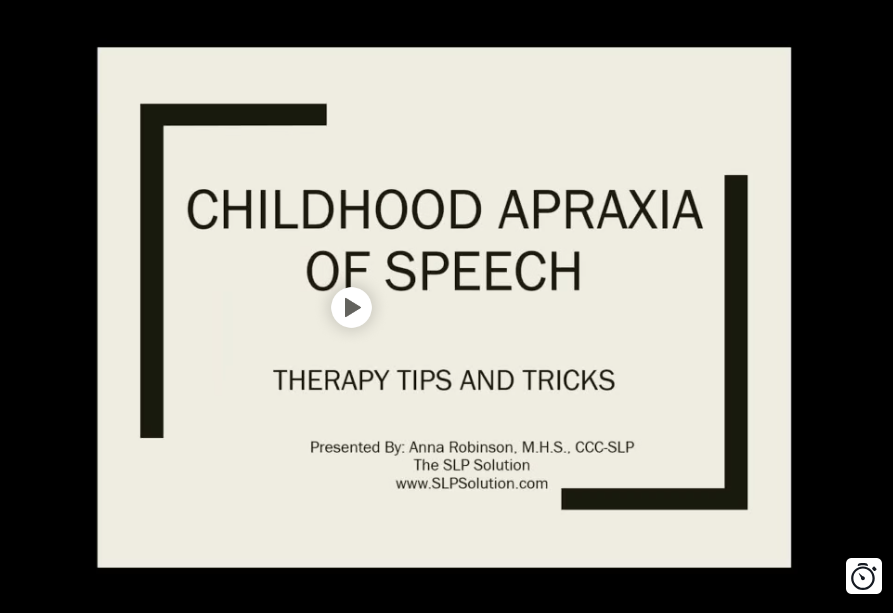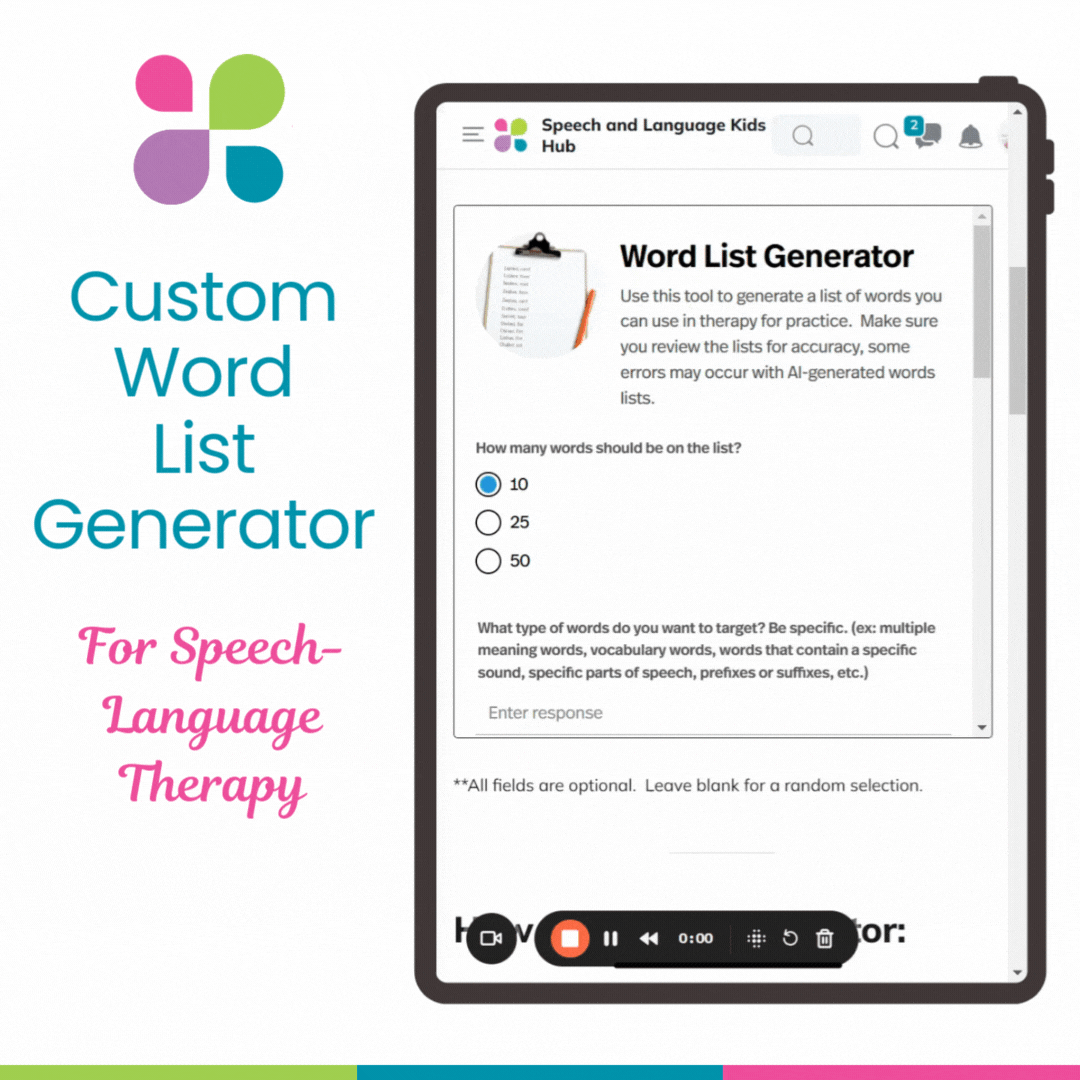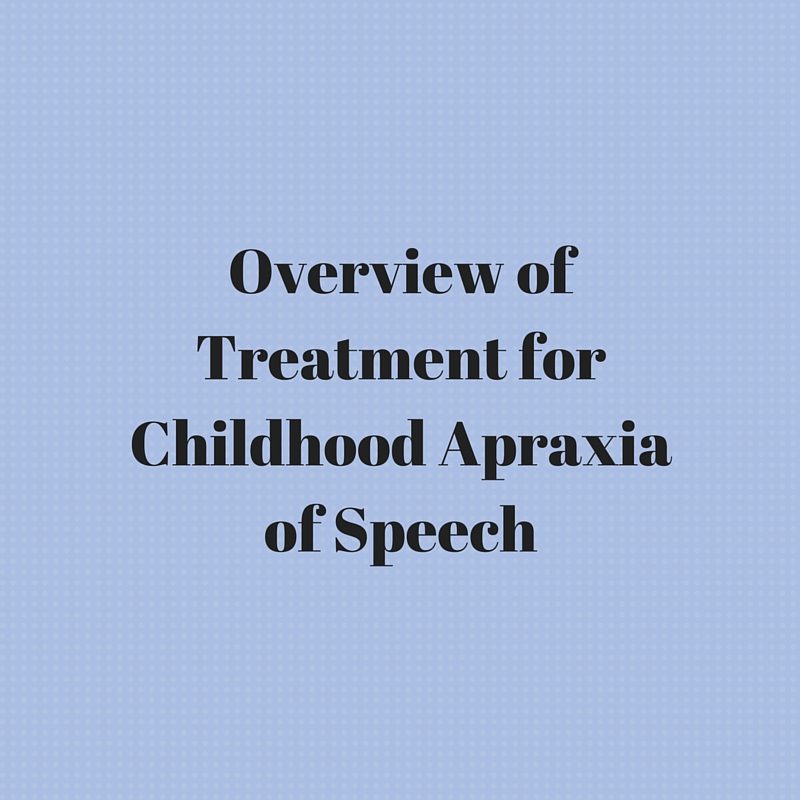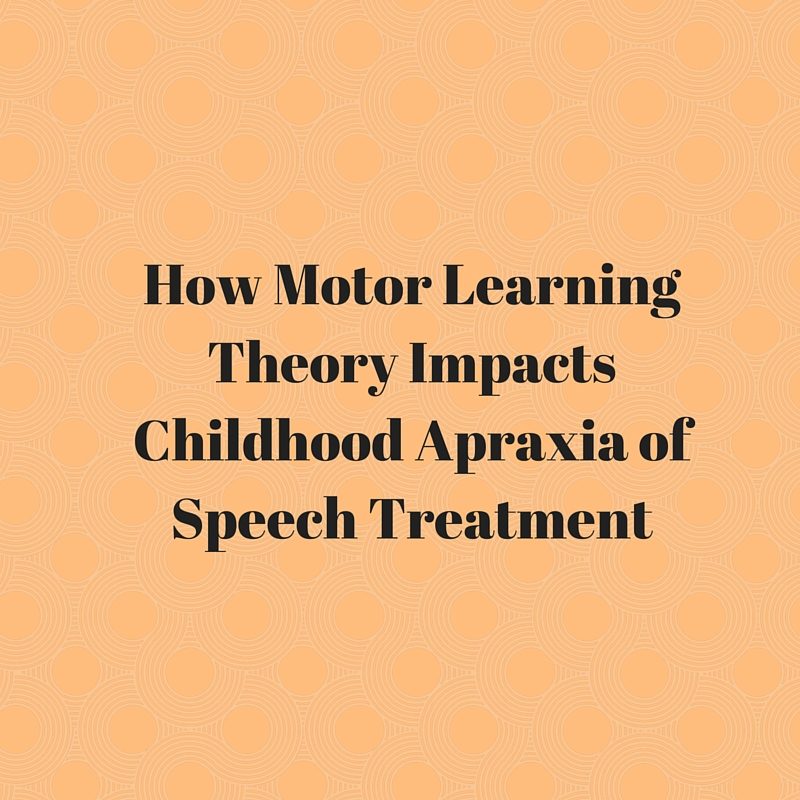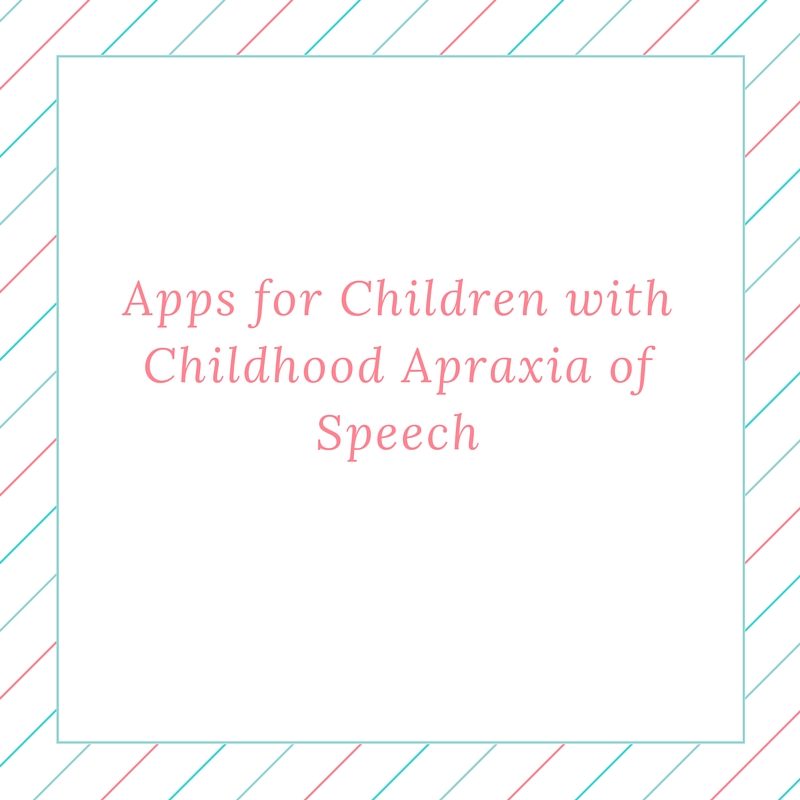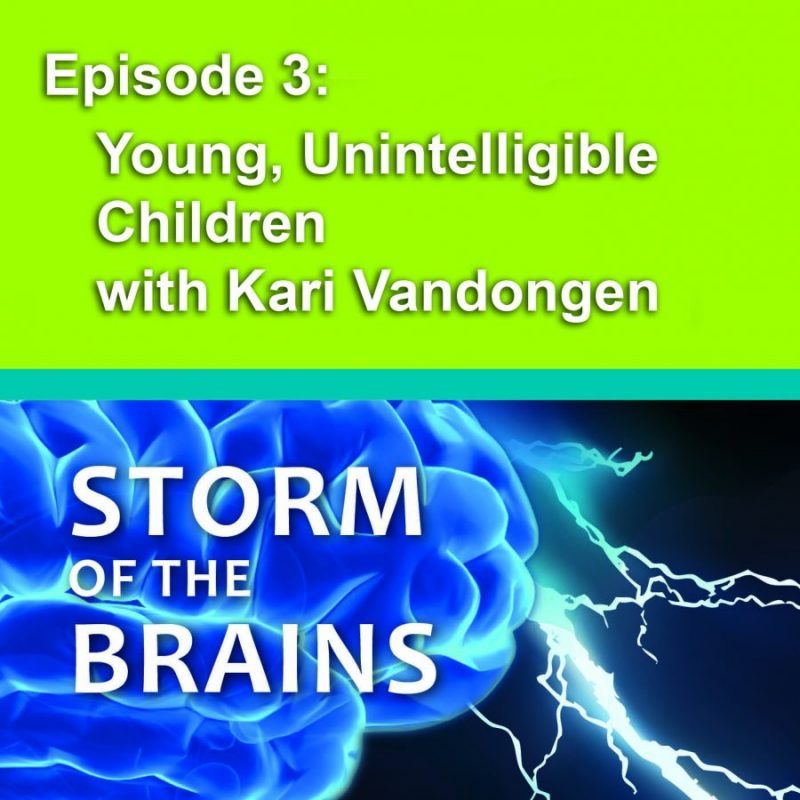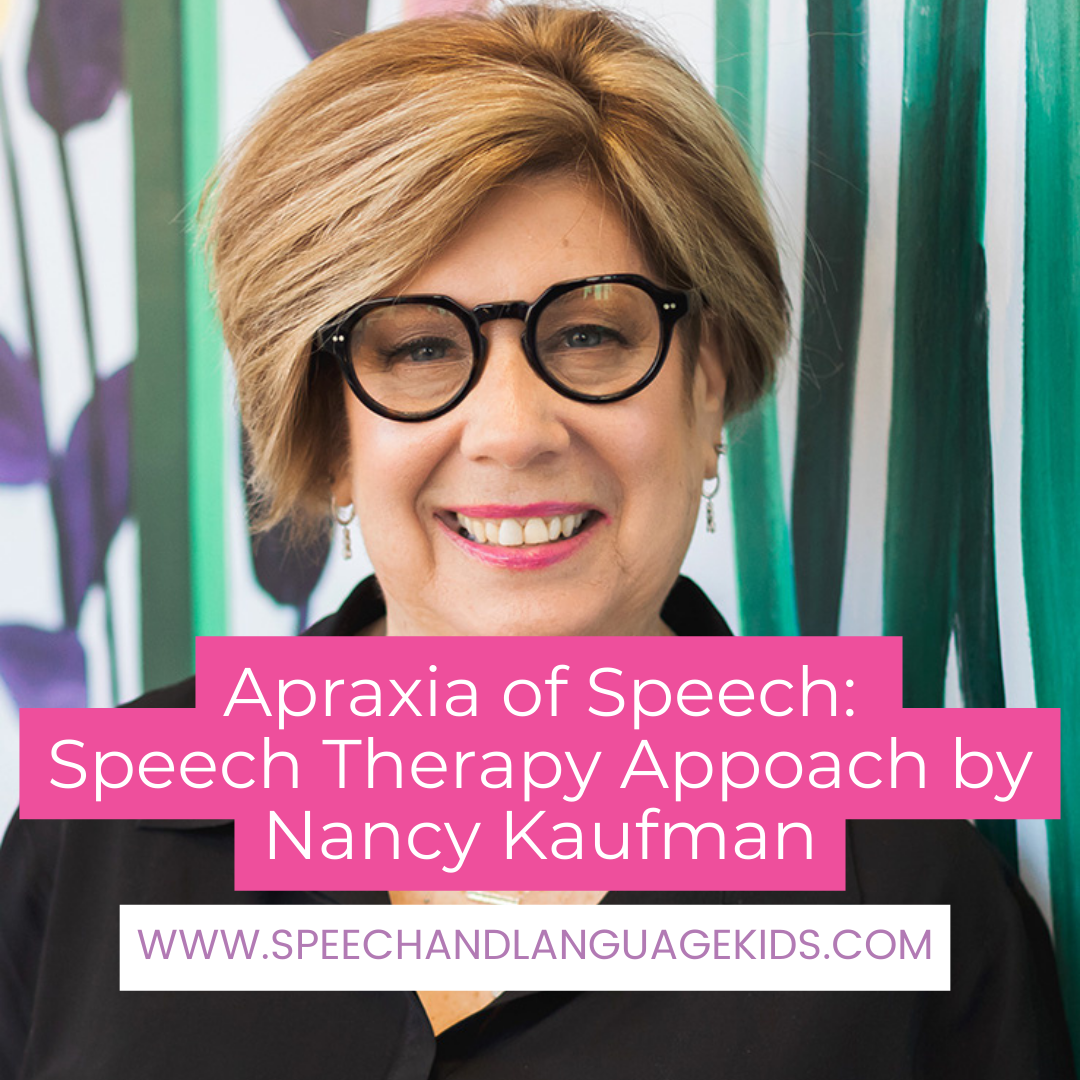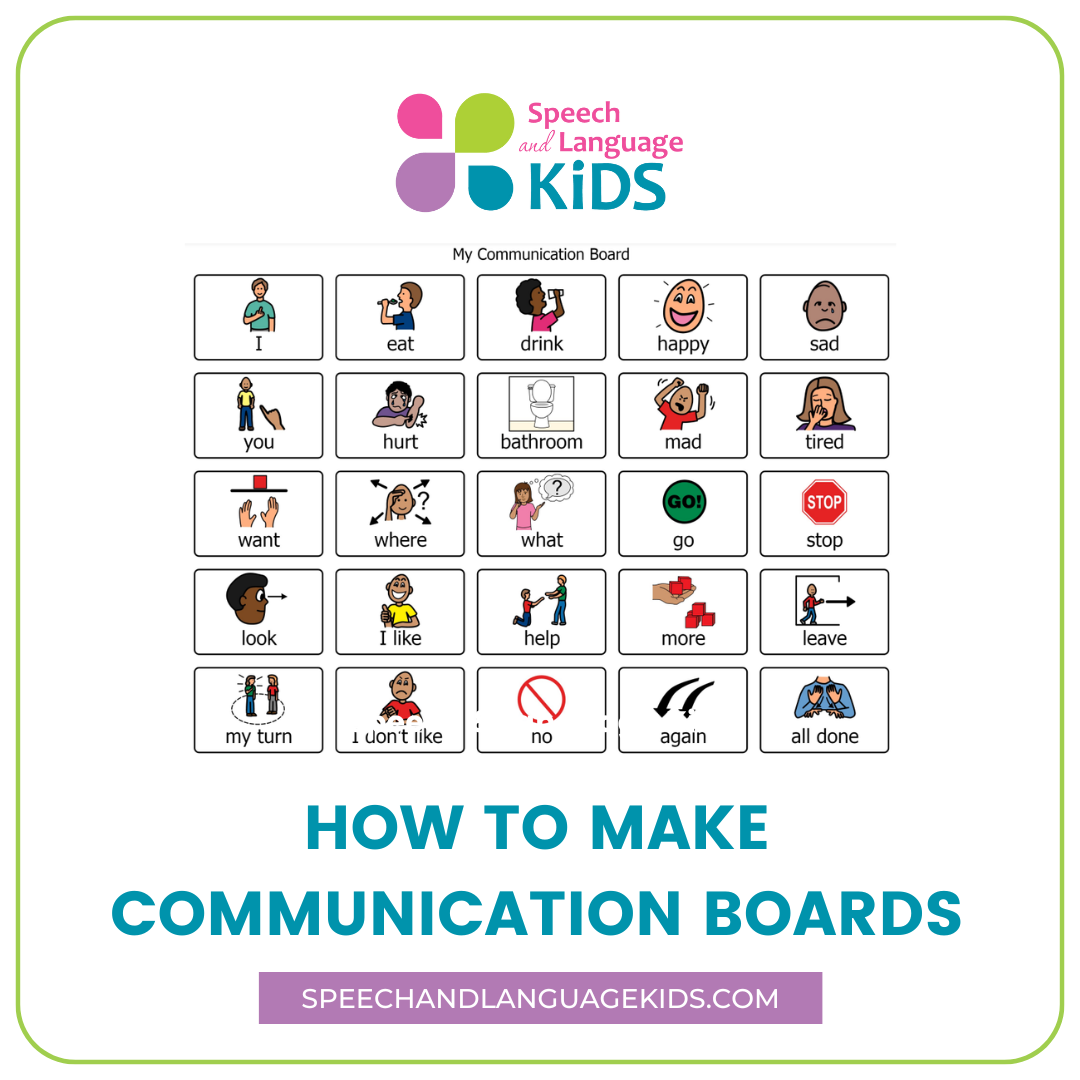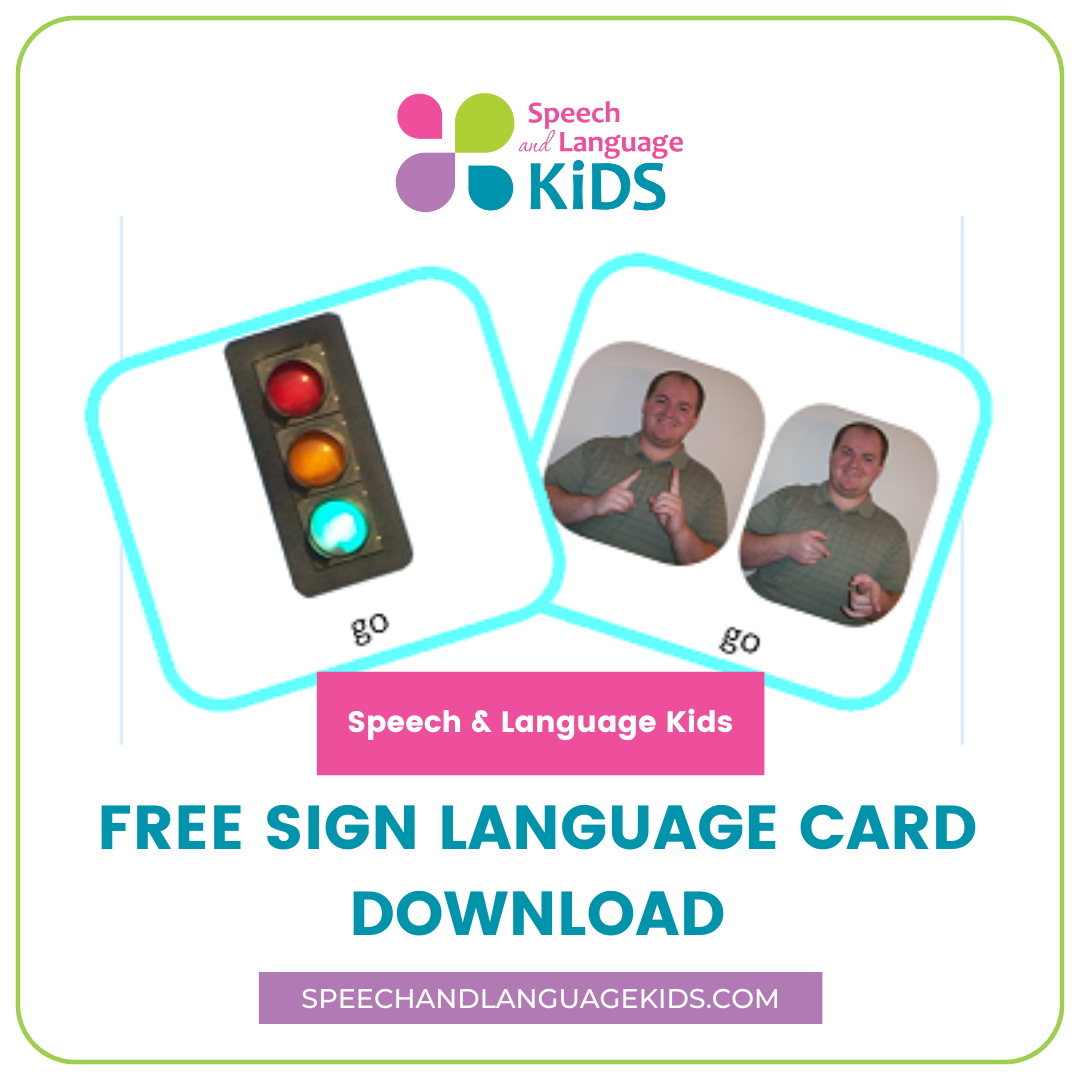Childhood Apraxia of Speech: Treatment and Resources
Childhood Apraxia of Speech (or CAS as we refer to it as), is a type of speech disorder that occurs in children, although it is rather uncommon. It is different than other speech disorders because it is neurologically-based, meaning it has to do with problems with the nervous system. Though it is important to keep in mind that this is not a problem that can be seen by a neurologist on a scan. Childhood Apraxia of Speech cannot be diagnosed by typical neurological scans. It is more of a hidden disorder.
What are the Symptoms of Childhood Apraxia of Speech?
Though the diagnosis of CAS is relatively new, experts have agreed that CAS usually includes these 3 generally-agreed upon components:
- Inconsistent errors on consonants and vowels in repeated productions of syllables or words(meaning that if the child says the same word many times, it may sound differently each time)
- Lengthened and disrupted coarticulatory transitions (meaning that the child’s speech sounds choppy or disconnected due to trouble transitioning between sounds or between words in older children)
- Inappropriate prosody, especially in the realization of lexical or phrasal stress between sounds and syllables (meaning that the rhythm, intonation, and stress of speech may sound off, the child may sound robotic, have incorrect phrasing, or stress the wrong words or syllables)
How Is Apraxia Different from Other Speech Sound Problems?
Most children with speech problems either have trouble physically making the sounds (like an /r/ distortion or a lisp on the /s/ sound) or they have trouble with entire groups of sounds, like replacing all long sounds like /f/ and /s/ with short sounds like /p/ and /t/. Children with CAS have a different type of speech problem. Children with CAS know what they want to say but when their brains send the message to the motor-planning part of the brain (the part of the brain that tells your muscles to move), the signal gets all mixed up and doesn’t make it to the mouth correctly. There’s a problem with the wiring!
Let’s think of it in terms of your car. Imagine you’re driving down the road and you realize that you need to turn left. You know that you need to turn on your left blinker so you tell your car to turn on the blinker (by pushing that little stick down). But, for some reason, the wiring in your car is all mixed up so instead of your blinker turning on, your clock starts flashing instead (true story: I had a car that did that once). You planned for the car to do one thing (turn on the blinker) but it did something else instead (flashed the clock). So you try again. This time, when you hit the blinker your headlights turn off. WHAT?? Every time you turn on your blinker, something different happens.
Can you imagine how frustrating that would be? That’s how these kiddos feel because they know they want their mouths to say something but every time they try it comes out differently. Sometimes it’s absolutely correct and clear as day, but then when they try to say that exact same thing again, they can’t do it.
That means children with CAS have trouble with the precision and consistency of speech movements even though the muscles and reflexes in their mouths are working just fine. (Think about our car analogy again: there’s nothing wrong with the light bulb in the blinker, it’s the wiring that’s the problem). However, young children with CAS are also lacking in the knowledge of how to move their mouths to create the different sounds because they have never been able to do it consistently before.
Without practice, the mouth doesn’t know what to do which is further complicated by the fact that the wiring is crossed. Therefore, it’s very important for these kiddos to get excellent feedback on how to move their mouths to say the sounds and whether or not they are saying it correctly. This feedback helps the brain figure out which paths to strengthen (for the wiring) and where to put the articulators (lips, tongue, etc.).
What Causes Childhood Apraxia of Speech?
Childhood Apraxia of Speech can be caused by a number of different causes or by seemingly nothing at all! Some CAS cases have been attributed to brain damage, such as a traumatic head injury or a near drowning. Other CAS cases have been linked to a “complex neurobehavioral disorders”, which is a fancy way to describe changes in behavior that come from a problem with the brain. These include attention deficit disorder and autism spectrum disorders. And then again, many cases of CAS have no known cause.
The problem with CAS is that no one has really been able to nail down a definite description of the disorder. Research on the topic is still rather limited so there is no formal definition of the disorder or even diaganostic criteria. That is to say that no one has been able to agree on a set of symptoms that say “Yes, this child definitely has childhood apraxia of speech”. For that reason, diagnosis of this disorder can be very tricky and two professionals may disagree on if a child does or does not have the disorder. Plus, many therapists feel ill-equipped to diagnose and treat CAS due to this confusion.
The 3 Criteria for Childhood Apraxia of Speech
That being said, there are three criteria which are gaining some consensus among investigators at the time that I am writing this (Summer of 2015). Hopefully there will be more definite criteria in the future, but the most commonly-accepted features currently are:
- Inconsistent errors on consonants and vowels in repeated productions of syllables or words (meaning that if the child says the same word many times, it may sound differently each time)
- Lengthened and disrupted coarticulatory transitions between sounds and syllables (meaning that the child’s speech sounds choppy or disconnected due to trouble transitioning between sounds or between words in older children)
- Inappropriate prosody, especially in the realization of lexical or phrasal stress (meaning that the rhythm, intonation, and stress of speech may sound off, the child may sound robotic, have incorrect phrasing, or stress the wrong words or syllables)
Keep in mind that since this is not an official definition, no one is saying that a child MUST have all three of these to qualify for the diagnosis and there are definitely more symptoms and features that may be present aside from these. Also, a single child may show these symptoms more or less depending on the difficulty of the task that he/she is doing as well as how stressful the situation is.
Possible Other Characteristics of Childhood Apraxia of Speech:
In addition to the three features mentioned above, there is a less commonly-agreed on set of characteristics that have been reported in some children with CAS. These characteristics are not always there and children without CAS can also have them, but the presence of many items from this list may point to CAS being the more likely diagnosis.
- Reduced vowel inventory
- Vowel errors
- Increased errors in longer or more complex syllable and word shapes (especially omissions, particularly in word-initial position)
- Groping
- Unusual errors that “defy process analysis,”
- Persistent or frequent regression (e.g., loss of words or sounds that were previously mastered)
- Differences in performance of automatic (overlearned) versus volitional (spontaneous or elicited) activities, with volitional activities more affected
- Errors in the ordering of sounds (migration and metathesis), syllables, morphemes, or even words.
How is Childhood Apraxia of Speech Diagnosed?
A childhood apraxia of speech diagnosis should be given cautiously. There is still much unknown about this disorder and diagnosis can be very tricky. This condition is very rare and many children are being given this diagnosis when they really just have a severe phonological or articulation disorder. A certified speech-language pathologist is capable of making a CAS diagnosis but you want to make sure that they have special training and experience with this population.
Diagnosis and Symptoms of Childhood Apraxia of Speech
What are the Treatments for Childhood Apraxia of Speech?
Children with CAS benefit immensely from speech therapy from a certified speech-language pathologist. The following video will give you a brief overview of what we would include in therapy for a child with CAS.
Overview of Childhood Apraxia of Speech Treatment:
More Therapy Ideas:
It can definitely be hard to know the best things to do in therapy for children with CAS so I’ve broken down the skills you need to work on into different levels and provided therapy activities for each level. Check it out:
Overview of What to Work on in Therapy for Children with Apraxia
Speech Therapy Activities for Apraxia <–Specific activities for teaching speech sounds and improving intelligibility
Nancy Kaufman’s Approach
For an in-depth look at Nancy Kaufman’s approach to treating CAS, check out this interview I did with her all about treatment for children with CAS:
How to Treat Childhood Apraxia of Speech
Motor Learning Theory
We often discuss “motor learning theory” when discussing treatment for Childhood Apraxia of Speech. Click the link below to learn how motor learning theory can help children with CAS:
Using Motor Learning Theory to Treat Apraxia
Apps, Technology, and AAC for Children with Apraxia:
These children often require an alternative means of communicating until their speech is able to “catch up” and be used for communication. These alternative means of communication can help reduce frustration and allow a child to communicate even though he cannot speak.
For more information about alternative communication, click here!
Children with apraxia may also benefit from other types of apps and technology. Here’s some more information about apps that are great for children with CAS:
Apps for Children with Apraxia
Challenging Behaviors and Apraxia of Speech
Many children with CAS have challenging behaviors. This is because they know that they want to communicate with those around them but they are unable to do so as effectively as they would like. This leads to frustration when they are trying to communicate but are not understood. This frustration can lead to tantrums and melt-downs, especially for younger children who don’t have good coping strategies yet. Here are a few links that will help you deal with those unwanted behaviors in your child with CAS:
How to Deal with Challenging Behaviors: An actionable guide on how to extinguish challenging behaviors
Browse All CAS-Related Content:
How to Generate Custom Word Lists for Speech-Language Therapy
How to Generate Custom Word Lists for Speech-Language Therapy Hey! I know you're busy so I'll keep this brief. If you're teaching speech/language skills and you need some word lists, you've come to the
Overview of Treatment for Childhood Apraxia of Speech
In this video, speech-language pathologist Carrie Clark will give you a brief overview of how to do speech therapy for younger children with Childhood Apraxia of Speech (CAS). Notes: 1. Teach an
Using Motor Learning Theory to Treat Apraxia
Ok, you've heard about "motor learning theory" and that it can be incredibly helpful for children with childhood apraxia of speech. But what does that even mean? In this video, speech-language pathologist Carrie Clark will
Apraxia Apps: for Childhood Apraxia of Speech
Apps and technology can be a great tool for children with Childhood Apraxia of Speech. In this video, Carrie Clark shows some excellent apraxia apps for use with children who have Childhood Apraxia of Speech
Apraxia of Speech: Speech Therapy Activities for CAS
Childhood Apraxia of Speech: How to Do Speech Therapy for CAS Childhood Apraxia of Speech (CAS) is a rare, neurologically-based speech disorder where the child knows what he wants to say but the
Childhood Apraxia of Speech Goals | CAS Speech Therapy
What is Childhood Apraxia of Speech (CAS)? CAS is a rare, neurologically-based speech disorder where the child knows what he wants to say but the message gets mixed up in the motor
SOTB3: Young, Unintelligible Children with Kari Vandongen
Speech therapists Carrie Clark and Keri Vandongen brainstorm therapy ideas for children who are young and highly unintelligible. These children are too young for traditional drill and practice so alternatives are needed!
Apraxia of Speech: Speech Therapy Approach by Nancy Kaufman
Teaching Adjectives to Children: Activities and Worksheets for Helping Kids Learn Adjectives Childhood Apraxia of Speech (CAS) is a rare, neurologically-based speech disorder where the child knows what he wants to say but
Signs, Symptoms, and Diagnosis of Childhood Apraxia of Speech
Speech-Language Pathologist Barbara Davis joins us today to discuss the signs and symptoms of Childhood Apraxia of Speech (CAS) as well as how it is diagnosed. Click the play button below to listen to the
How to Make Communication Boards
How to Make Communication Boards: Communication boards are a great, inexpensive way to provide someone with a means to communicate who may not be able to speak yet. Each board contains several pictures that
CV, VC, CVC, and CVCV Words | Free Flashcards (Real Photos!)
How and Why to Use CV, VC, CVC, and CVCV Words in Speech Therapy: When working with a child who is not able to speak long words, we can begin improving their speech
Sign Language Flash Cards: Free PDF Download
Free Sign Language Flashcard Download Click here to download the sign language flashcards for free! Join the Hub to Access (Free Trial) Research has shown that teaching sign

About the Author: Carrie Clark, MA CCC-SLP
Hi, I’m Carrie! I’m a speech-language pathologist from Columbia, Missouri, USA. I’ve worked with children and teenagers of all ages in schools, preschools, and even my own private practice. I love digging through the research on speech and language topics and breaking it down into step-by-step plans for my followers.
Connect with Me:

